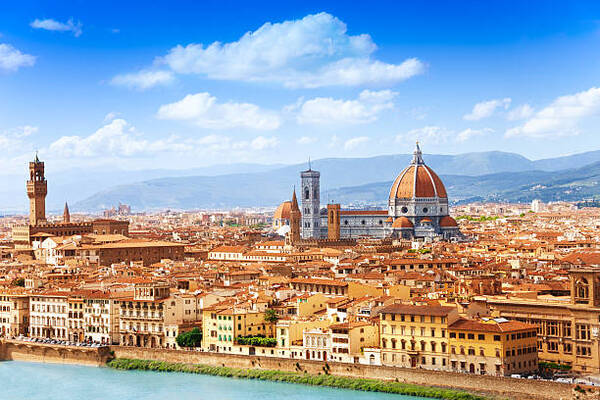Thursday, July 10, 2025

Florence, Italy, has introduced a new ban on cycle rickshaws and electric carts to combat the overwhelming impact of mass tourism, which has congested its UNESCO-listed historic center, disrupted daily life for residents, and threatened the preservation of its cultural heritage. This decisive action aims to restore balance, reduce traffic chaos, and protect the city’s fragile urban fabric from further strain.
Italy’s Florence has taken a bold and unprecedented step to tackle the escalating pressures of over-tourism by becoming the first city in Europe to enforce a complete ban on bicycle rickshaws. This decisive action is part of a broader effort to restore order in the city’s overcrowded UNESCO-listed historic center and protect its rich cultural heritage for future generations.
The ban targets not only pedal-powered rickshaws but also extends to other unconventional tourist transport options such as electric golf carts. These vehicles, often used to shuttle visitors through Florence’s UNESCO-listed old town, have contributed to worsening congestion in narrow alleys and public squares that were never designed for modern tourist flows. Local officials emphasized that this measure is critical in reducing traffic strain, preserving pedestrian-friendly areas, and maintaining the authenticity of the city’s centuries-old streetscapes.
Tourist numbers in Florence have reached extraordinary levels, with approximately 15 million visitors recorded in the past year alone. This unprecedented volume has transformed everyday life for the city’s 367,000 residents. Roads once navigable are now jammed with tour groups, rental vehicles, and non-traditional transport modes, leaving locals struggling to move freely within their own city. Many have chosen to leave the historic center entirely, seeking quieter and more affordable neighborhoods away from the tourist crush.
In response to these challenges, Florence is not banning all forms of small electric transport outright. A small fleet of 24 white electric carts, each with seating for up to eight people, will still be allowed to operate under strict conditions. These vehicles must follow a fixed route and are intended to provide limited mobility for those who need it, without adding to the chaotic traffic environment. The exception highlights Florence’s effort to balance accessibility with the need to reduce congestion.
Other cities are facing similar dilemmas. In London, for example, discussions around regulating cycle rickshaws—commonly referred to as pedicabs—have gained significant momentum. A recent public consultation conducted by Transport for London revealed strong support for tighter controls. Of the 7,700 people surveyed, over 95 percent said they believed pedicab operators should carry proper insurance and that restrictions on noise, especially loud music, were essential to maintaining a pleasant urban environment. In addition, more than 75 percent of respondents expressed feelings of insecurity when using pedicabs, underlining concerns about safety and oversight.
Florence’s clampdown on rickshaws is just one aspect of a broader strategy to tackle the adverse effects of excessive tourism. The city has also implemented tough new rules targeting short-term rentals, which have proliferated across the historic center. These properties now represent roughly one-third of all housing in the area, contributing to skyrocketing rents and a decline in long-term housing availability for residents. To enforce new regulations, city authorities have begun removing unauthorized keysafes—approximately 400 of which were dismantled from railings, fences, and lamp posts throughout the city. These devices enabled tourists to access vacation rentals without ever meeting a host, further detaching the tourism experience from the local community.
In another measure introduced late last year, Florence banned the use of loudspeakers and amplifiers by tour guides operating in its most sensitive heritage zones. Officials argued that the constant flow of guided groups, combined with amplified narration, disrupted the atmosphere and diminished the cultural value of these locations. The city’s leadership believes that reducing noise pollution and crowd sizes is essential to protecting the livability and historical integrity of the urban core.
Collectively, these actions signal a new era for Florence—one where preserving heritage, enhancing resident well-being, and delivering meaningful visitor experiences are placed above unchecked tourism growth. As other popular destinations in Europe and beyond look to address similar challenges, Florence may well become a model for sustainable urban tourism management in the years ahead.






